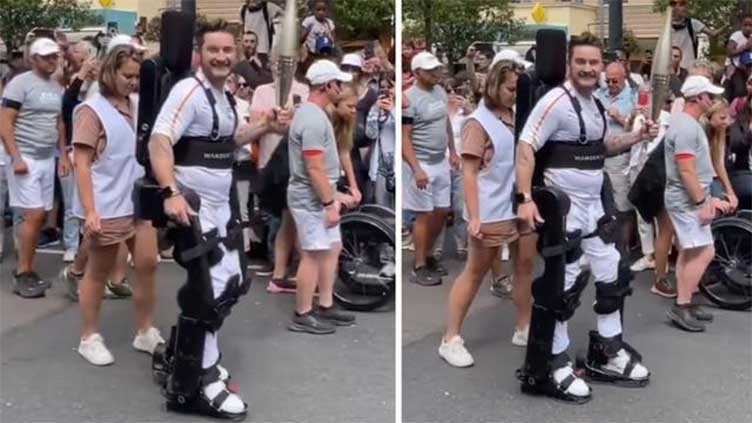AI-robotic exoskeleton enables paraplegic athlete carry Olympic flame

Technology
World’s first self-stabilising walking exoskeleton
(Web Desk) - For the first time, an athlete using a robotic exoskeleton has carried the Olympic flame. Kevin Piette, a French para-athlete, carried the flame in front of the Temple of Hera in Ancient Olympia, Greece, on Tuesday.
Around 11 years ago, an accident left the French tennis star paraplegic. But he returned to the game as a para-athlete.
Now, a clip of the para-Olympic tennis star is going viral on social media platforms, amassing millions of views.
In the video, the para-athlete is seen using a robotic exoskeleton to walk while carrying the Olympic flame.
As one of the initial testers, he has contributed to its improvement, even taking part in “cybathlons,” which are competitions where people with disabilities use assistive technologies to perform everyday activities.
Currently used in rehabilitation, a personalized version of the exoskeleton is being developed at present to enable greater independence at home.
Piette became an exoskeleton pilot for Wandercraft, a company that originated in Paris but now maintains its headquarters in New York.
The company claims that it is the developer of the world’s first self-stabilizing walking exoskeleton.
Wandercraft offers the Personal Exoskeleton, which is designed to enable people with walking impairments to stand up and walk again.
Wandercraft said that the exoskeleton is designed to provide a new mobility solution to address the complex long-term physical and mental needs of mobility-impaired users and provide them with greater liberty.
The Personal Exoskeleton builds upon engineering and robotic breakthrough innovations already integrated into Wandercraft’s Atalante X exoskeleton, the world’s first self-stabilizing walking exoskeleton for rehabilitation support.
Atalante X emulates human walking, provides hands-free multi-directional locomotion, and is currently utilized in rehabilitation hospitals and walking centers across the USA, Europe, and Brazil, according to Wandercraft.



